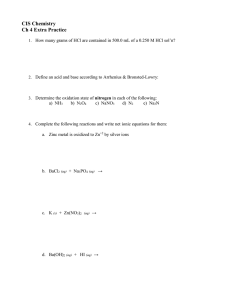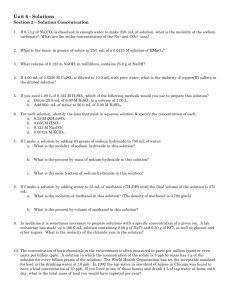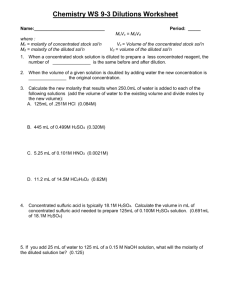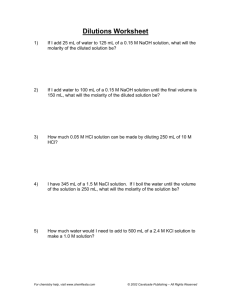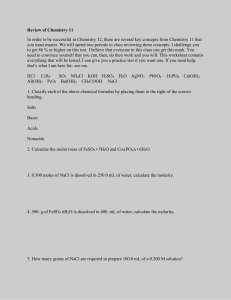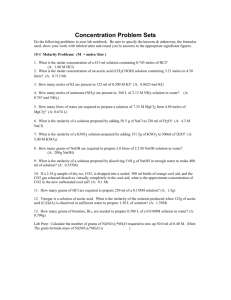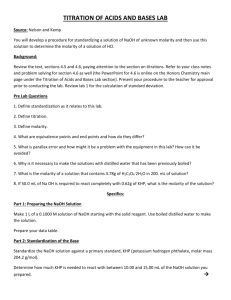dilution/molarity/acid/bases/neutralizations/titrations
advertisement
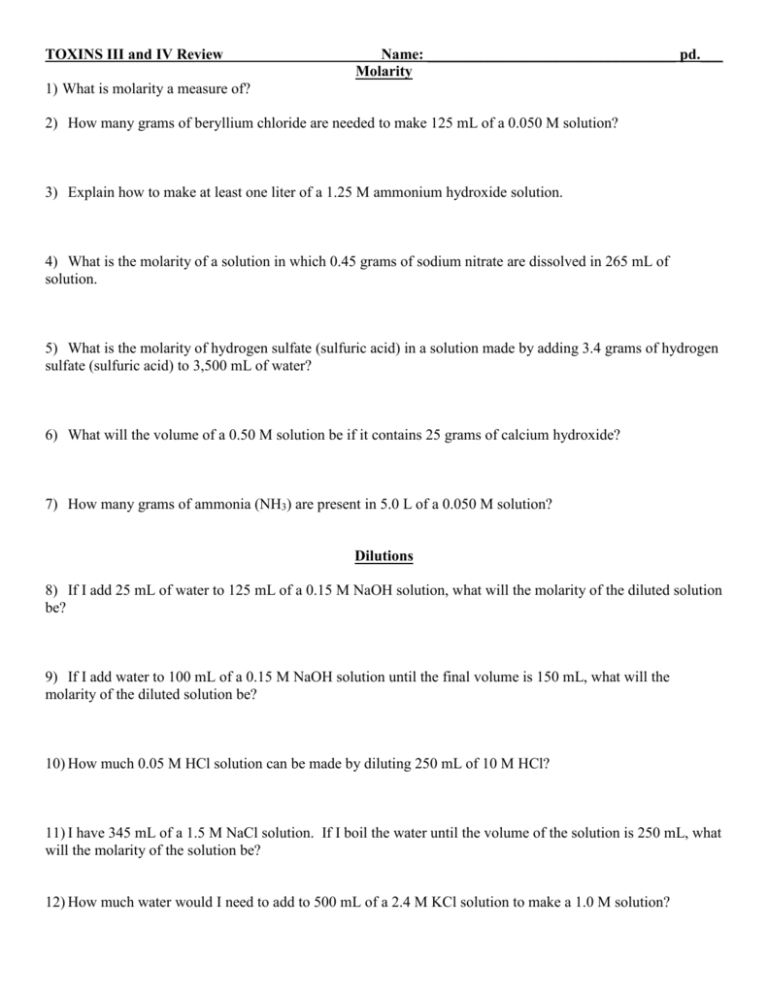
TOXINS III and IV Review Name: _________________________________ pd.___ Molarity 1) What is molarity a measure of? 2) How many grams of beryllium chloride are needed to make 125 mL of a 0.050 M solution? 3) Explain how to make at least one liter of a 1.25 M ammonium hydroxide solution. 4) What is the molarity of a solution in which 0.45 grams of sodium nitrate are dissolved in 265 mL of solution. 5) What is the molarity of hydrogen sulfate (sulfuric acid) in a solution made by adding 3.4 grams of hydrogen sulfate (sulfuric acid) to 3,500 mL of water? 6) What will the volume of a 0.50 M solution be if it contains 25 grams of calcium hydroxide? 7) How many grams of ammonia (NH3) are present in 5.0 L of a 0.050 M solution? Dilutions 8) If I add 25 mL of water to 125 mL of a 0.15 M NaOH solution, what will the molarity of the diluted solution be? 9) If I add water to 100 mL of a 0.15 M NaOH solution until the final volume is 150 mL, what will the molarity of the diluted solution be? 10) How much 0.05 M HCl solution can be made by diluting 250 mL of 10 M HCl? 11) I have 345 mL of a 1.5 M NaCl solution. If I boil the water until the volume of the solution is 250 mL, what will the molarity of the solution be? 12) How much water would I need to add to 500 mL of a 2.4 M KCl solution to make a 1.0 M solution? Acids and Bases 13) How does Arrhenius define an acid and a base? 14) How do Brønsted-Lowry define an acid and a base? 15) What is the difference between a strong acid/base and a weak acid/base? 16) Circle the parts of the chemical formulas shown below that make them an acid or a base. HCl HF HC2H3O2 H2SO4 NaOH Ca(OH)2 17) What is pH a measure of? 18) Can you raise the pH of an acid above 7 by adding water? Why or why not? 19) What does it mean when we say an acid has been neutralized? 20) Write the neutralization reactions for the following: a. Sodium hydroxide and nitric acid b. Sulfuric acid and potassium hydroxide c. Acetic acid and calcium hydroxide d. Phosphoric acid (H3PO4) and Barium hydroxide 21) During a titration, a base with a known concentration is added to an acid of known volume but unknown concentration. When do you know the titration is done? What does “equivalence point” mean and how does it relate to a titration? 22) A 0.25M NaOH was titrated against a 45-mL sample of HCl with unknown concentration. It required 27.3mL of NaOH to turn the bromothymol blue indicator green. What is the molarity of the HCl? 23) Draw particle views representing a strong acid and weak acid of equal molarity. 24) Draw particle views representing a strong base and weak base where the weak base has a higher molarity than the strong base. 25) Draw particle views representing a strong base and weak base where the weak base has a lower molarity than the strong base.
